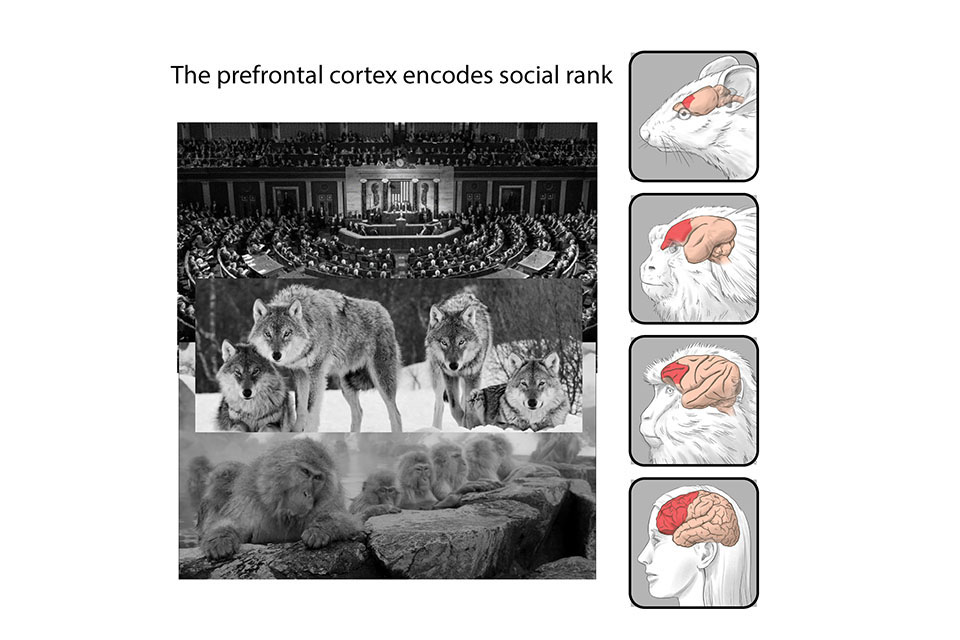Nancy Padilla Coreano, PhD
Assistant Professor
Department of Neuroscience
Principal Investigator
Evelyn F. & William McKnight Brain Institute
University of Florida
(March 15, 2022)
Elucidating the Role of the Medial Prefrontal Cortex in Social Dominance
Even as children, we can quickly figure out who is the leader of the pack, who the "cool kids" are and who the bullies are. But the question of how the brain makes sense of social rank has been an open question. The work of Dr. Padilla Coreano highlights the medial prefrontal cortex as essential for determining social rank and a connection with the lateral hypothalamus is linked to social dominance behavior. She and her lab have developed new techniques for tracking multiple mice in social competition studies, to visualize how patterns of neuronal firing give rise to the phenomenon of social dominance.
Most social species, from insects to humans, organize into social dominance hierarchies. These hierarchies decrease aggression, conserve energy and maximize survival for the entire group. Individuals must consider their social rank in any social encounter and adjust their behavior accordingly. Despite dominance behaviors being critical for successful interactions, it is unknown how the brain encodes social rank. The medial prefrontal cortex (mPFC) has been implicated in social dominance in rodents and humans. However, which specific prefrontal circuits are involved and how social rank is represented is unknown. Using mice, we found that mPFC neural activity is predictive of social rank, demonstrating that mPFC encodes social rank. Prefrontal social rank signals were largest during social competition. Furthermore, we find that mPFC neurons that project to the lateral hypothalamus are causally linked to social dominance behavior.
To study the neural dynamics of social rank we designed a novel social competition assay for male mice. Existing dominance assays lack the trial structure needed to avoid sensorimotor confounds. To understand how the brain controls social behavior, it is ideal to combine both reductionist assays that allow us to isolate variables easily, and complex assays to capture a larger repertoire of behaviors. We designed a reward social competition assay in which mice with stable social hierarchies compete for a reward that is signaled by a tone. Dominant mice won more rewards across trials. To track multiple animals simultaneously, we develop a deep learning tool, AlphaTracker. Using this assay and tool we characterized that behavior during this social competition differed depending on relative social rank.
Using wireless electrophysiology, we found that mPFC population dynamics were predictive of competitive success and social rank. Furthermore, we identified that optogenetic stimulation of the mPFC cells that project to the lateral hypothalamus (LH) increased winning during this social competition task. Importantly, mPFC->LH stimulation did not alter general effort, food or general sociability. Altogether, we established a novel platform to enable the quantitative examination of how the brain gives rise to dominance behaviors. Furthermore, this is the first demonstration that a specific mPFC projection encodes social rank and modulates social dominance behavior (Padilla-Coreano et al., 2022).
